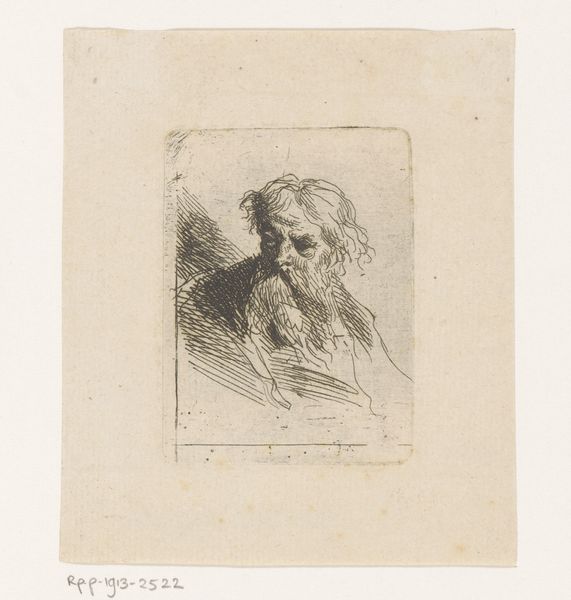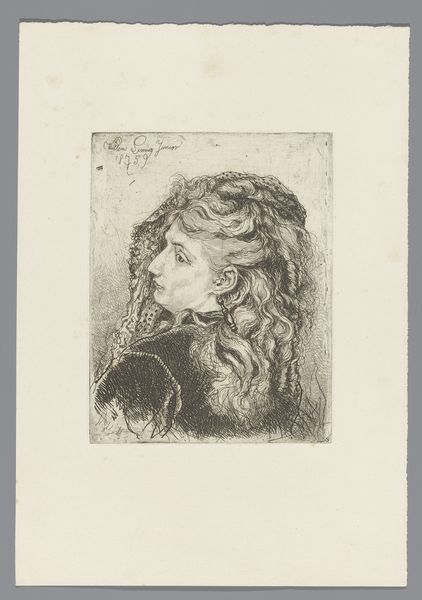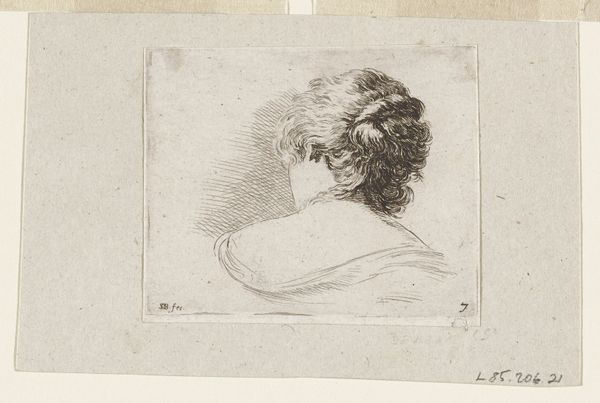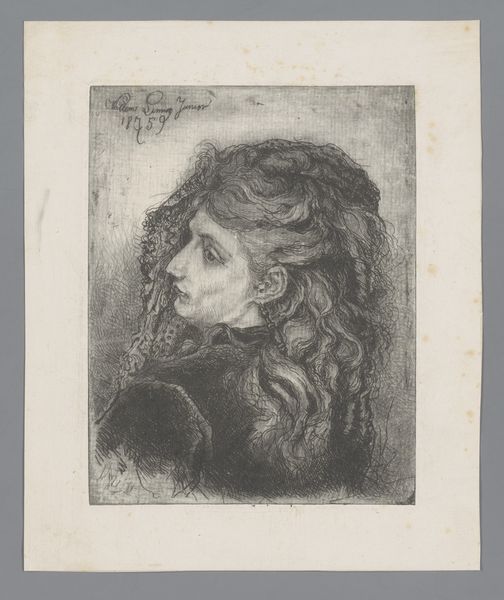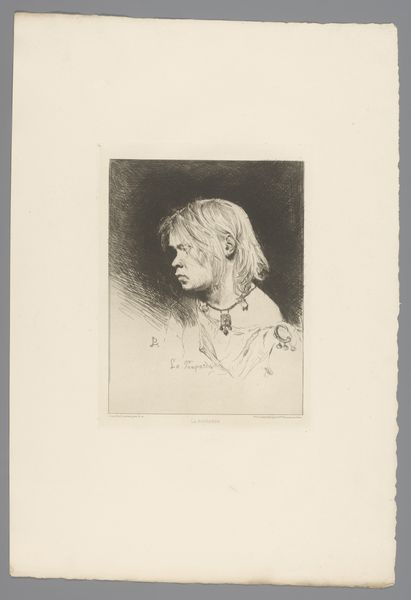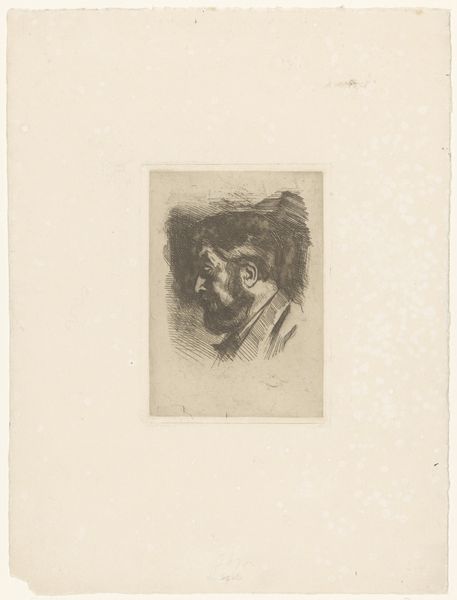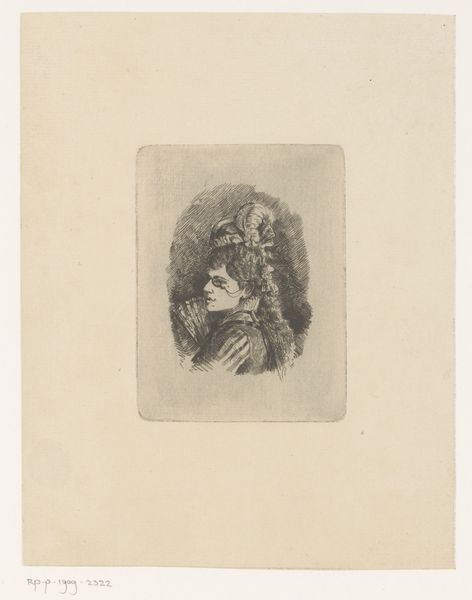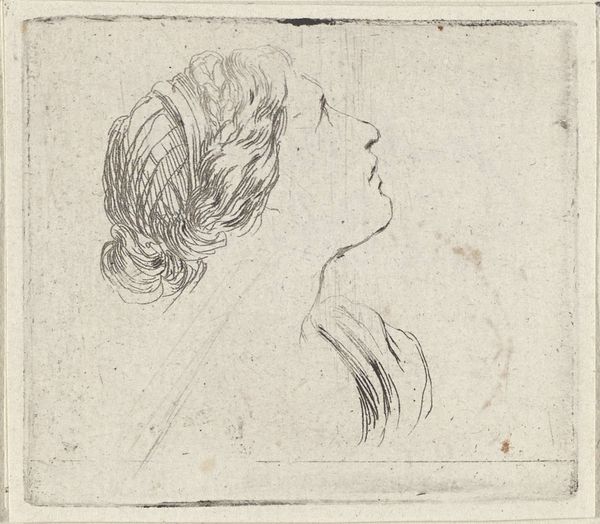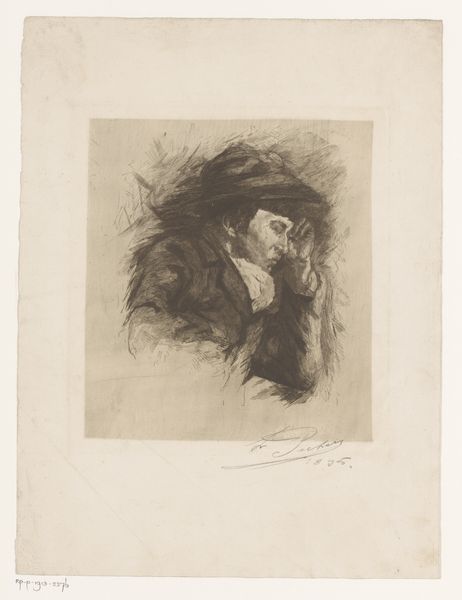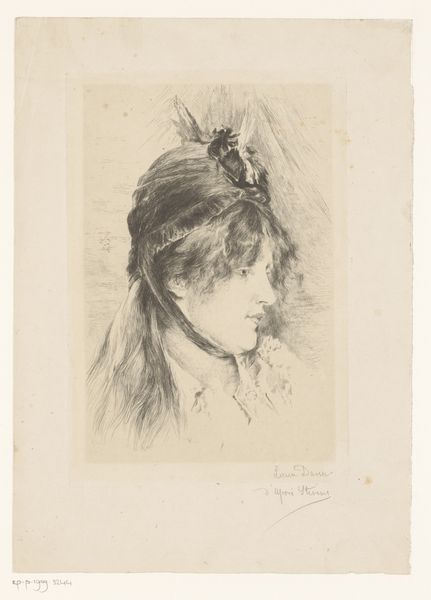
Portræt af en gammel mand i profil mod venstre 1775 - 1779
0:00
0:00
Dimensions: 208 mm (height) x 157 mm (width) (plademål)
Curator: Here we see “Portræt af en gammel mand i profil mod venstre”, a drawing, print and pencil creation realized between 1775 and 1779. The artist who traced this form is Louise-Rosalie Hémery. It now resides at the SMK, Statens Museum for Kunst. Editor: My first impression? Melancholy. The subject’s downcast gaze, the flowing beard… it speaks of reflection, maybe even regret. The color too—that reddish-brown hue—lends a warmth, yet it's muted, like faded memory. Curator: It’s evocative isn’t it? That Baroque sensibility relies on capturing very raw emotions. Red chalk was favored for figure studies, which connects the technique itself to the subject’s vulnerability. Editor: And it places this work in a distinct sociopolitical landscape. While it feels classical in some ways, who did it portray, why, and what was Hemery trying to say with this image. Was it simply an aesthetic exercise? And even then, what's so interesting to draw from a older male model? These choices were loaded in a era undergoing radical changes to class structure and philosophical framework. Curator: Agreed. There is a distinct turn of interest to certain class portrayals occurring across this period in academic art, but what is so important here, beyond gender and social class portrayals is the universal archetype. The flowing beard immediately connects to associations of sages, ancient philosophers, people we associate with long-earned knowledge. Consider the visual language present. Line after line used in this portrait reinforces these archetypes and provides us a look into how past historical portraits might work on viewers to conjure up emotions like respect, wisdom, and tradition. Editor: Exactly! It taps into these established symbols of wisdom, but is it reinforcing them uncritically, or subtly questioning the role of age and masculinity as the sole bearers of knowledge? The downcast eyes could represent internal conflict, disillusionment with the existing order… Curator: Interesting. One sees such an idea captured powerfully through shadow in the piece. Here’s someone in conflict and you feel that intensely within the subject’s expression, caught between worlds and perhaps on the cusp of new wisdom. The texture itself carries significant weight, because it also invokes earlier, perhaps more religious portraiture that one can draw a strong parallel too. Editor: It invites us to think about the human condition. Seeing as it remains preserved at SMK, Statens Museum for Kunst this also invites us to revisit questions like that when assessing historical portraiture. Curator: Well, thank you. It always feels rewarding looking for new and recurring elements throughout the cultural continuity that stretches for us. Editor: Agreed! Let this draw the attention of present voices looking back at earlier historical narratives and add their perspectives into the discussion.
Comments
No comments
Be the first to comment and join the conversation on the ultimate creative platform.
